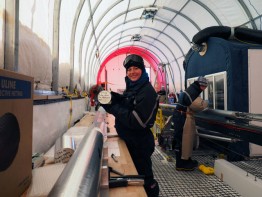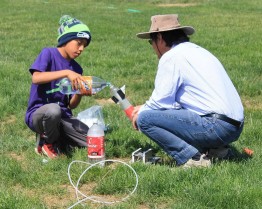This January — high summer at the South Pole — a University of Washington glaciologist helped lead a project that surpassed its goal to drill the first deep ice core at the planet’s southernmost tip, providing material to help solve a climate puzzle. Eric Steig, a UW professor of Earth and space sciences, returned to Seattle this month after being chief scientist for the final stretch of the National Science Foundation-funded effort at the Antarctic station.
Read more at UW Today »For weather forecasting, precise observations matter more than butterflies
In the 1970s, scientist Edward Lorenz famously asked whether the flapping of a butterfly’s wings in Brazil could lead to a tornado in Texas. During the decades since, the butterfly effect and chaos theory have sparked countless debates and pop culture references. But the question also holds practical importance: What do small, unpredictable events mean for the future of weather prediction?
Read more at UW Today »Join us for Amplify on Feb. 24!
Learn more about building robust academic partnerships with the private sector from a panel of UW Environment science communication pros!
Register now »Dangerous fishing may be endangered, new study finds
Catch shares, a form of “rights-based” fisheries management adopted for several fisheries in the Pacific Northwest, may put an end to the kind of daring exploits chronicled in the “Deadliest Catch.” A new study of fishing practices found that the “risky” behavior that makes fishing one of the most dangerous lines of work dropped sharply following the adoption of catch shares management in the West Coast fixed gear sablefish fishery.
Read more at UW Today »NASA-funded consortium to support science education in Washington, Oregon and Montana
A new program based at the University of Washington will bring together educational institutions, K-12 teachers and informal education organizations to inspire, teach and recruit the next generation of students in science, technology, engineering and mathematics. The new Northwest Earth and Space Sciences Pipeline, or NESSP, has begun a $10 million, five-year cooperative agreement with NASA that broadens existing programs and launches new efforts throughout Washington, Oregon and Montana, with a particular focus on underserved and underrepresented communities.
Read more at UW Today »




